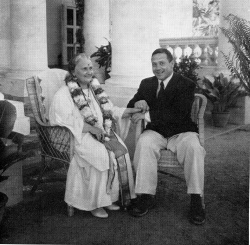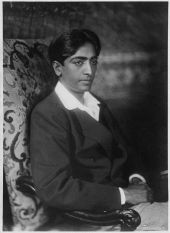Education and the Theosophical Movement
UNDER CONSTRUCTION
UNDER CONSTRUCTION
Education has long been a focus of attention in many branches of the international Theosophical Movement.
Educational initiatives of the early Theosophical Society
Educational initiatives of TS, Adyar
Theosophical Educational Trust
Society for the Promotion of National Education
Theosophical Fraternity in Education
Curuppumullage Jinarājadāsa wrote a brief account, as follows:
There is to-day a great movement called the New Education Fellowship. It has spread to most of the countries in Europe, and also to North America, and nearly all distinguished leaders of education are among its principal officers, or on its committees. It publishes a review in three languages. It has held its congresses in the principal capitals of Europe, and its two last congresses were in South Africa and Australia. But this powerful movement for the ideals of New Education began with a band of Theosophists in England, who created the "Theosophical Fraternity in Education." A few rich Theosophists then poured thousands of pounds into experimental schools in connection with this work of the Fraternity. To-day, in India, the Theosophists have New Education Schools in several places; there is a school in Australia, another in New Zealand. In fact, one of the first results of our study of Theosophy is to understand the child from a new standpoint.[1]
The New Education Fellowship was an international organization dedicated to the ideals of progressive education. It was established in 1921 by Theosophist Beatrice Ensor, founder of a progressive school in Letchworth, England, and several colleagues. The fellowship spread its philosophy through such journals as "The New Era" (now "The New Era in Education") in England and Progressive Education in the United States.[2] It is now known as the World Education Fellowship.
Raja Yoga education
Rudolf Steiner and Waldorf education
Educational approach
These are some of the elements of Waldorf education:
- Imaginative play is the work of young children.
- Reality is gradually introduced during the early years.
- Toys are objects made of natural materials designed to stimulate imagination, such as lengths of silk, wooden blocks, and plain dolls.
- The curriculum is concerned with developmental stages, unfolding consciousness, and age-appropriateness.
- Storytelling and fantasy are used to convey concepts.
- The atmosphere is one of beauty and harmony.
- Early cooperative activities foster social development.
- Emphasis is placed on the rhythms of the days and seasons.
- Children are engaged in a spiritual journey learning the inner realities of the physical world.
Montessori education
Dr. Maria Monessori was already well-established as an educator when she first met Annie Besant, president of the Theosophical Society, Adyar. Theosophists were very interested in Montessori education, and used its principles in a class at National Hindu Girls’ School in Madras, under the supervision of the Society for the Promotion of National Education. When World War II made Dr. Montessori's life in Italy too dangerous, TS president George S. Arundale invited her to reside at the Adyar headqarters of the TS in Madras (now Chennai), India. She and her son Mario used Adyar as their base of operations for ten years, conducting teacher training all over South Asia.
Educational approach
These are some elements of Montessori's educational approach:
- Fantasy is postponed until the child is grounded in reality.
- Tasks and activities are reality oriented.
- The intellect or "absorbent mind" is engaged early.
- Children are free to choose their own activities.
- Manipulative materials are designed to be aesthetically pleasing, and to support very specific educational goals.
- The atmosphere is calm and productive.
- Teacher is a facilitator of independent learning.
- Socialization begins with respecting the space of others.
- Older children voluntarily assist each other in learning.
Krishnamurti education
As a young man in 1917, Jiddu Krishnamurti described "the life of an ideal school where love rules and inspires, where the students grow into noble adolescents under the fostering care of teachers who feel the greatness of their vocation."[3]
Educational approach
These are some principles applied in Krishnamurti schools:
- School focus is on the development of the whole human being.
- Students learn to observe the world and act in the world without conditioning or self-centeredness.
- The school tries to establish an environment in which this kind of education and self-development can take place.
- Faculty work together to develop themselves as human beings who are capable of maintaining the educational environment.
- There is no fixed curriculum or method.
Recent developments in education
Golden Link Schools
Adyar Theosophical Academy
The Adyar Theosophical Academy was established in 2019 in Besant Gardens at the Adyar headquarters of the Theosophical Society during the administration of Tim Boyd. The school uses the Golden Link College program of transformative education developed in The Philippines by Vic Hao Chin.
Additional resources
Articles
- Education and Theosophy at Theosopedia
- Education in the Light of Theosophy by Annie Besant
- Notes on Theosophy and Education by Bertram Keightley
- The Goal of Theosophical Education compiled by Vicente Hao Chin, Jr.
- Theosophical Education and the Golden Link College by Vicente Hao Chin, Jr.
- Readings on Theosophical Education compiled by Vicente Hao Chin, Jr.
Books
- Theosophical Education Chapter II in Thesis Dr Annie Besant and her contributions to society and politics 1893-1933 by Anthony Chaganti (See Table of contents)
- On Education by Vicente Hao Chin, Jr.
- Education as Service by J. Krishnamurti
Websites
Notes
- ↑ Curuppumullage Jinarājadāsa, The New Humanity of Intuition (Adyar, Madras: The Theosophical Publishing House, 1947), 136-137.
- ↑ New Education Fellowship at The Columbia Encyclopedia, 6th ed. (March 18, 2024)]
- ↑ Jiddu Krishnamurti, Education as Service, 1917. Mentioned by Mary Lutyens in Krishnamurti: The Years of Awakening (New York: Farrar, Straus and Giroux, 1975), 6.


